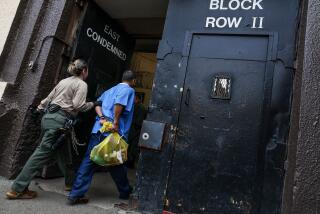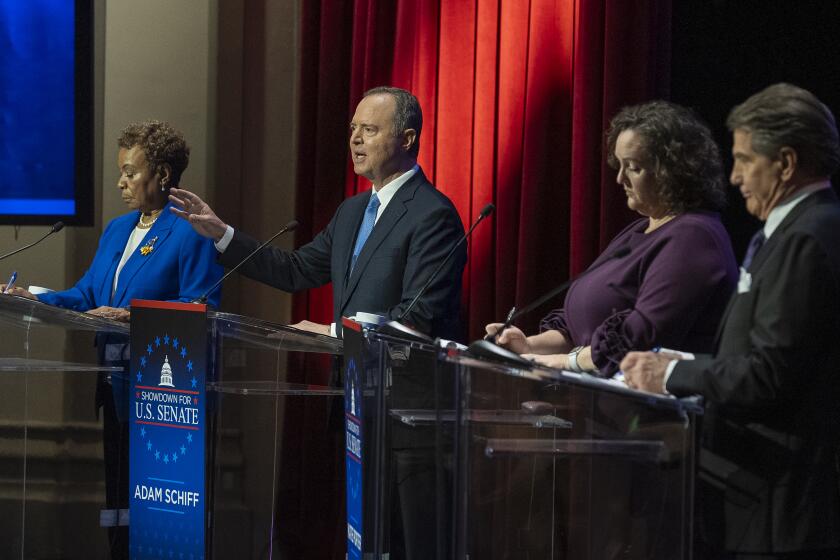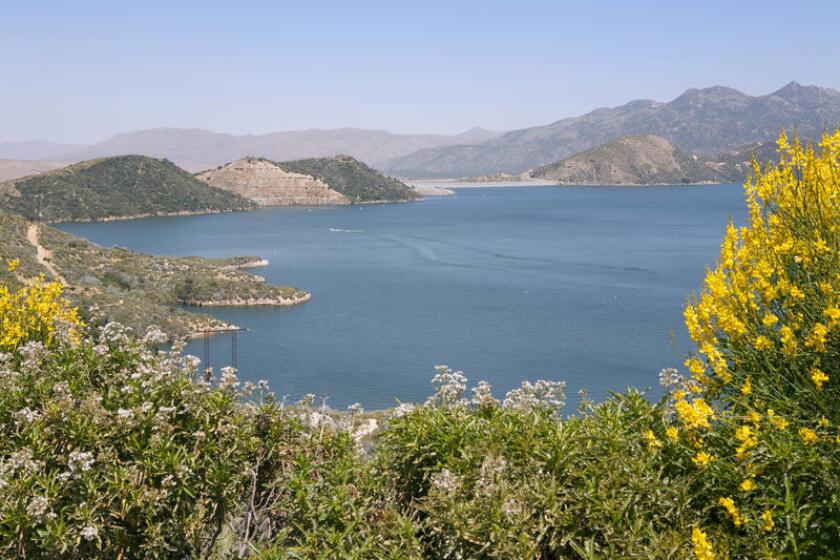Yaroslavsky Turns Sewer Discussion Into Political Forum
What was supposed to be a discussion of sewer problems in Los Angeles turned into a political debate of sorts Saturday between Councilman Zev Yaroslavsky, a potential mayoral candidate, and one of Mayor Tom Bradley’s top lieutenants.
Appearing at a meeting of San Fernando Valley homeowners groups, both Yaroslavsky and Deputy Mayor Michael Gage outlined similar measures to relieve pressure on what city engineers say is an overburdened sewer system.
But the councilman went a step further, suggesting that poor City Hall leadership had contributed to a “management catastrophe.”
Yaroslavsky said city officials failed to expand the sewer system at the same time they were encouraging growth. By 1991, city engineers have said, rapid growth threatens to flood the sewer system with more waste than it can safely treat.
Treatment Plant Problems Cited
“We got into this mess by not being good managers,” the councilman said.
Moreover, he charged, Bradley and other city officials responded sluggishly to pressure from federal authorities to resolve pumping problems at the huge Hyperion Treatment Plant in Playa del Rey.
Although acknowledging that the system is facing a crisis, Gage said the city is working with federal authorities on the Hyperion problem.
“We are not quite the environmental rogue that Zev suggests,” he said. “Let’s set the record straight.”
Gage said that, despite the obvious defects, the system in Los Angeles is a model for other major cities in its strict environmental controls.
But there was plenty of room for agreement between the two as well.
Both Yaroslavsky and Gage told the 45 people attending the meeting that the sewer system, which treats about 440 million gallons of sewage a day, already is near capacity.
The two were invited to speak by the fledgling Coalition of Valley Communities, a group of about 35 homeowners associations in the Valley.
Most of the homeowner groups oppose rapid growth in the Valley and see the burden on the sewer system as evidence that growth must be controlled.
In the last two years, the system’s daily average flow has increased by about 10 million gallons. City engineers have warned that, unless that increase is reduced to about 7 million gallons, sewers could fill up and toilets overflow.
Both Yaroslavsky and Gage said conservation and growth limits are needed to reduce pressure on the system until the Donald C. Tillman Water Reclamation Plant in Van Nuys is expanded. Plans call for doubling the plant’s daily capacity to 80 million gallons by 1991.
Differed on Key Point
The homeowners, who began the day with a tour of the Tillman plant, listened attentively as the men spoke and appeared to support their recommendation to conserve water and reduce the daily level of sewage. The homeowners differed with both, however, on a key point.
The homeowners said they would like to see growth in the Valley tied to sewage capacity. Some of them also said they fear that expanding the sewer system will only encourage growth.
But Yaroslavsky and Gage took the opposite view.
“You can’t control growth through sewer hookups,” Yaroslavsky said.
Gage said growth should be controlled through land-use ordinances, not sewers.
If the city were to postpone expanding the sewer system, both men said, it could cause more serious problems later. Even with controls, some growth is inevitable, they said, and the city must be prepared to handle that growth.
During his brief remarks, Gage detailed a proposal made by Bradley last December to restrict water use by both residents and industry in Los Angeles. Bradley also recommended limiting growth in such cities as San Fernando and Burbank, which send more sewage into the system than allowed by their contracts with Los Angeles. The system handles sewage from Los Angeles and 27 cities and special districts.
Officials Disagree
Officials from both cities said last week that they would challenge Bradley’s proposal. San Fernando City Administrator Donald Penman said that, although the city is over its contractual allotment by 800,000 gallons, that level was established in a 1950 agreement. He said the city of 20,000 residents accounts for less than one-half of 1% of the sewage going into the system.
“You just can’t point to San Fernando” as the cause of the system’s problems, Penman said.
Saying his city is within the contractual limits, Burbank Assistant City Manager Stephen Helvey said officials would challenge any attempt to impose growth moratoriums.
“If they are having a flow problem at Hyperion, it’s not because of the flow they are getting from the city of Burbank,” he said.
More to Read
Start your day right
Sign up for Essential California for news, features and recommendations from the L.A. Times and beyond in your inbox six days a week.
You may occasionally receive promotional content from the Los Angeles Times.






